21 Garage Gym Ideas Layout for Creating Your Ideal Workout Space
Transforming your garage into a gym is a smart and cost-effective way to create a workout space tailored to your needs. No need to spend money on a pricey membership or commute to a crowded gym. With a little creativity, your garage can become the perfect spot for fitness. Here are 21 garage gym layout ideas to help you get started.
1. Multi-Functional Space
Make your garage gym versatile by creating distinct workout zones. You can set up a cardio area with a treadmill, a strength training section with dumbbells and racks, and a flexibility zone with mats for yoga or stretching. This layout maximizes space and functionality.
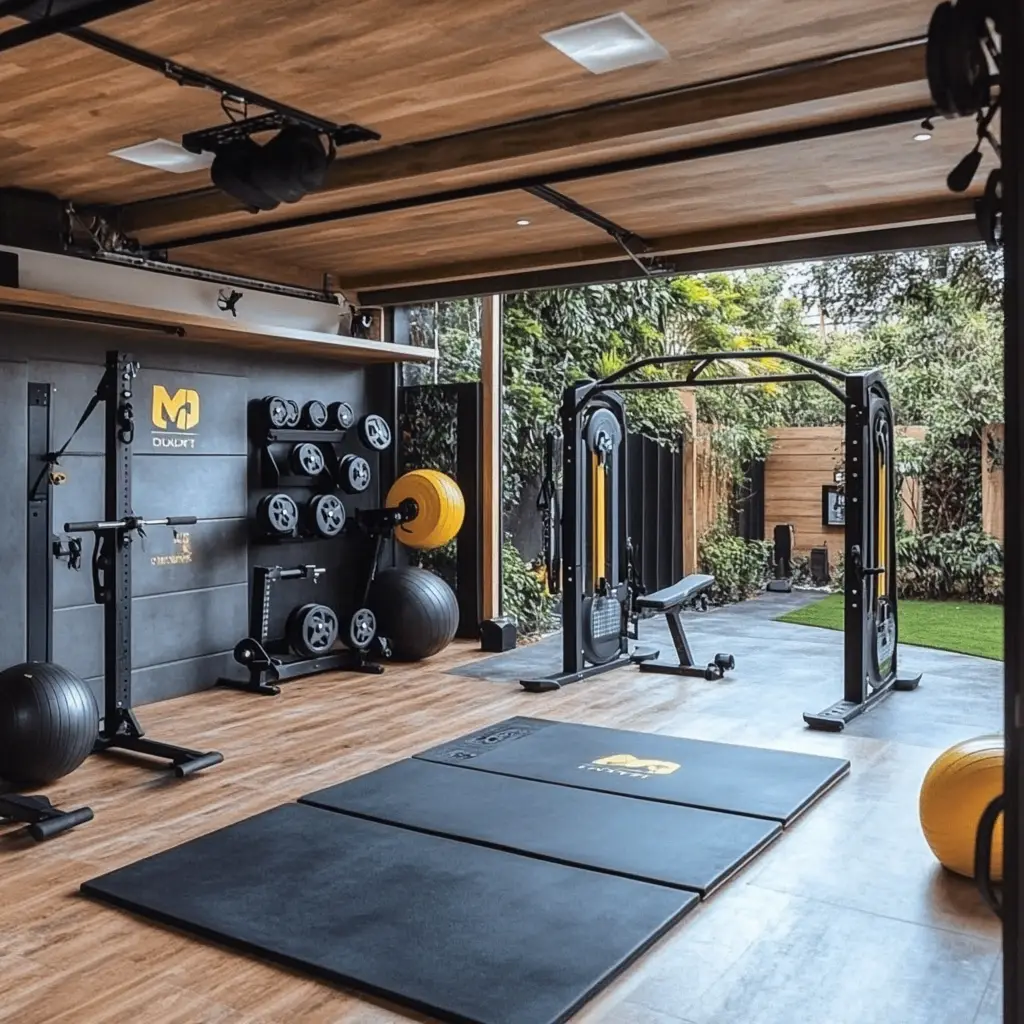
2. Minimalist Setup
If you’re a fan of simplicity, go for a minimalist approach. Use only the essential equipment—think a set of dumbbells, a kettlebell, and a yoga mat. This layout helps keep the space open, clean, and uncluttered.
3. Cardio Corner
Dedicate a corner of your garage to cardio. A treadmill, stationary bike, or rowing machine is all you need. Adding a wall-mounted TV or some motivational posters can help keep you entertained while you burn those calories.
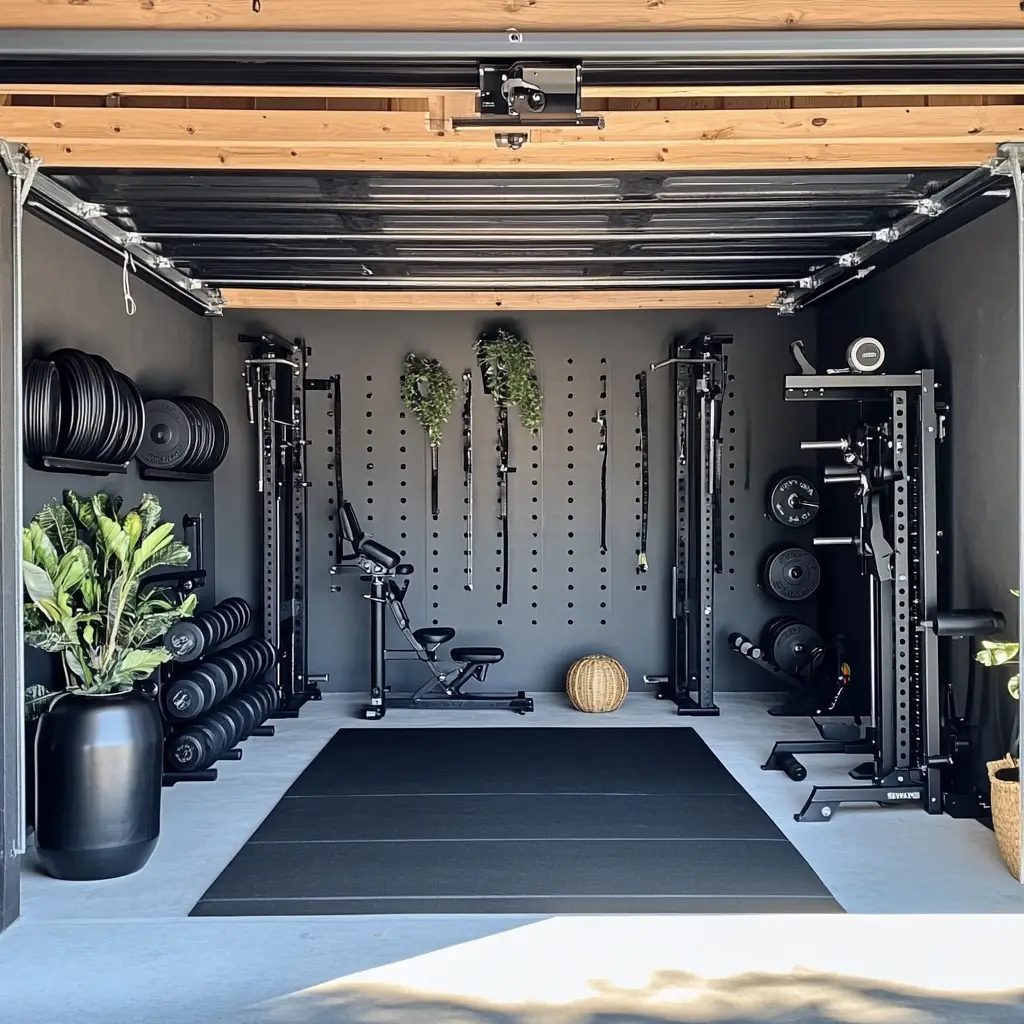
4. Strength Training Focus
If strength training is your main focus, create a dedicated area with adjustable weights, a bench, and a squat rack. Use shelving or storage boxes to keep your free weights organized and easily accessible.
5. CrossFit Garage Gym
For those who love functional training, a CrossFit-inspired garage gym layout might be perfect. You’ll need plenty of space for box jumps, kettlebell swings, and Olympic lifts. Install wall-mounted racks for your equipment and consider adding a pull-up bar.
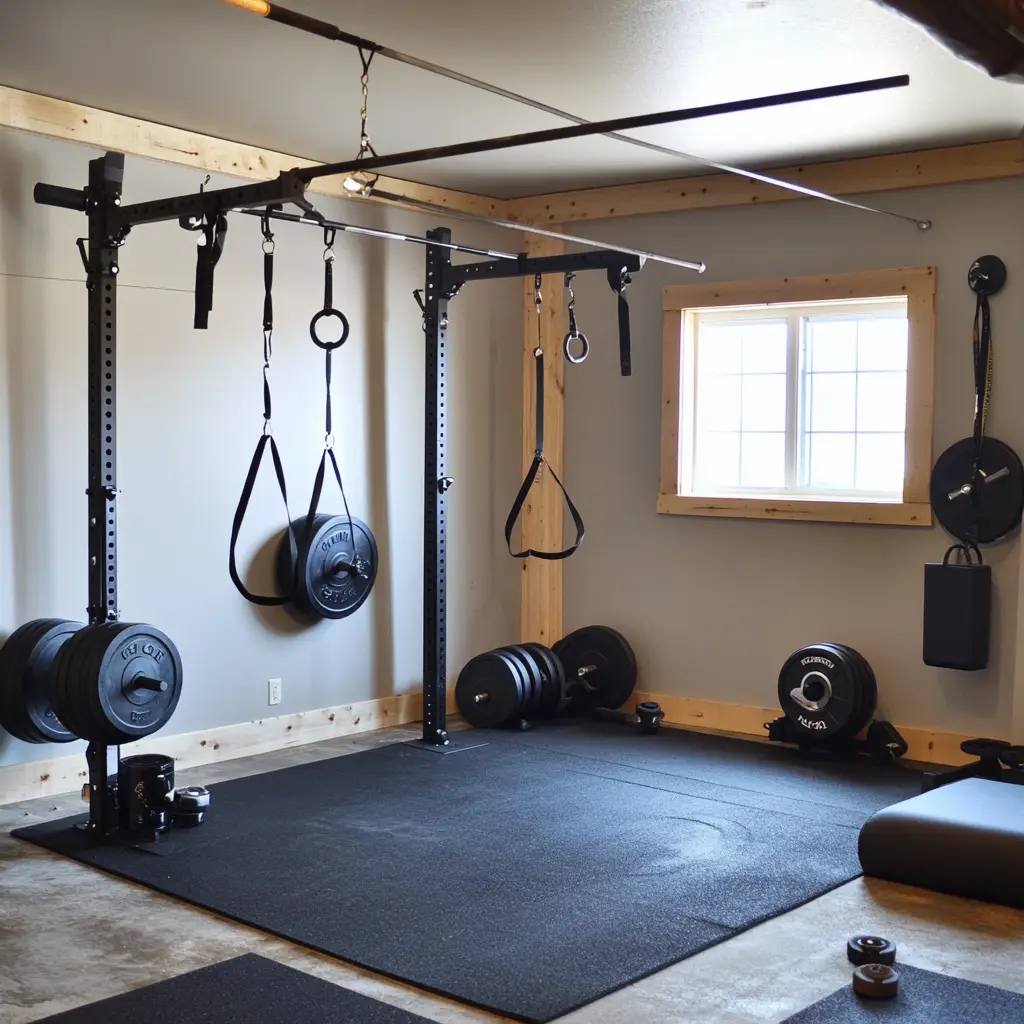
6. Powerlifting Zone
Powerlifting requires heavy-duty equipment, and your garage is the ideal spot for it. A sturdy squat rack, deadlift platform, bench press, and bumper plates should be your focus. Ensure the layout allows plenty of space for proper form and movement.
7. Small-Scale Studio
If you don’t have a ton of room, create a small-scale studio by using folding or stackable equipment. A collapsible squat rack, adjustable bench, and compact cardio machines will help make the most of limited space.
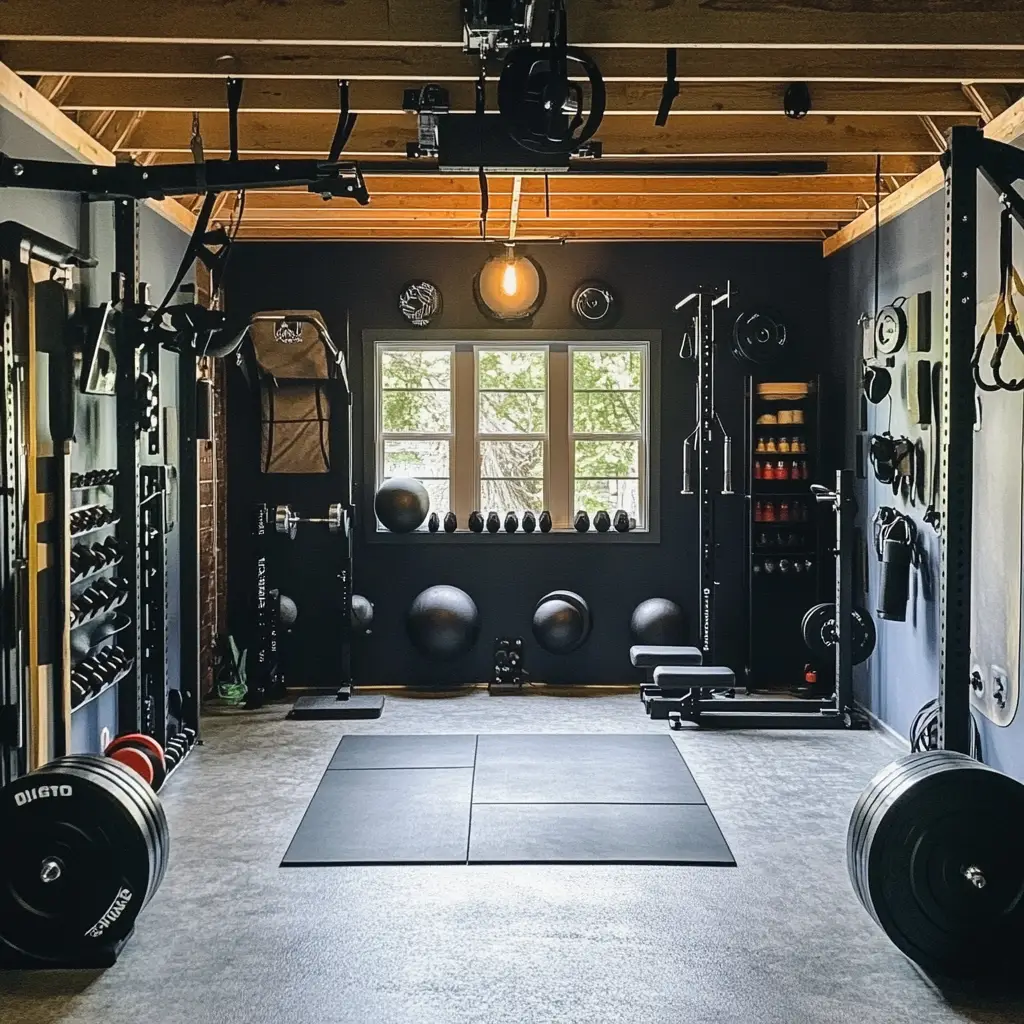
8. Martial Arts or Boxing Corner
Set up a dedicated space for martial arts or boxing with a heavy bag, speed bag, and maybe even some focus mitts. This layout can be as simple or as expansive as you want, depending on the space available.
9. Yoga and Meditation Zone
If your focus is more on flexibility and mindfulness, set up a calming yoga or meditation area with soft lighting, mirrors, and a mat. You can also add a small speaker for calming music or guided workout videos.
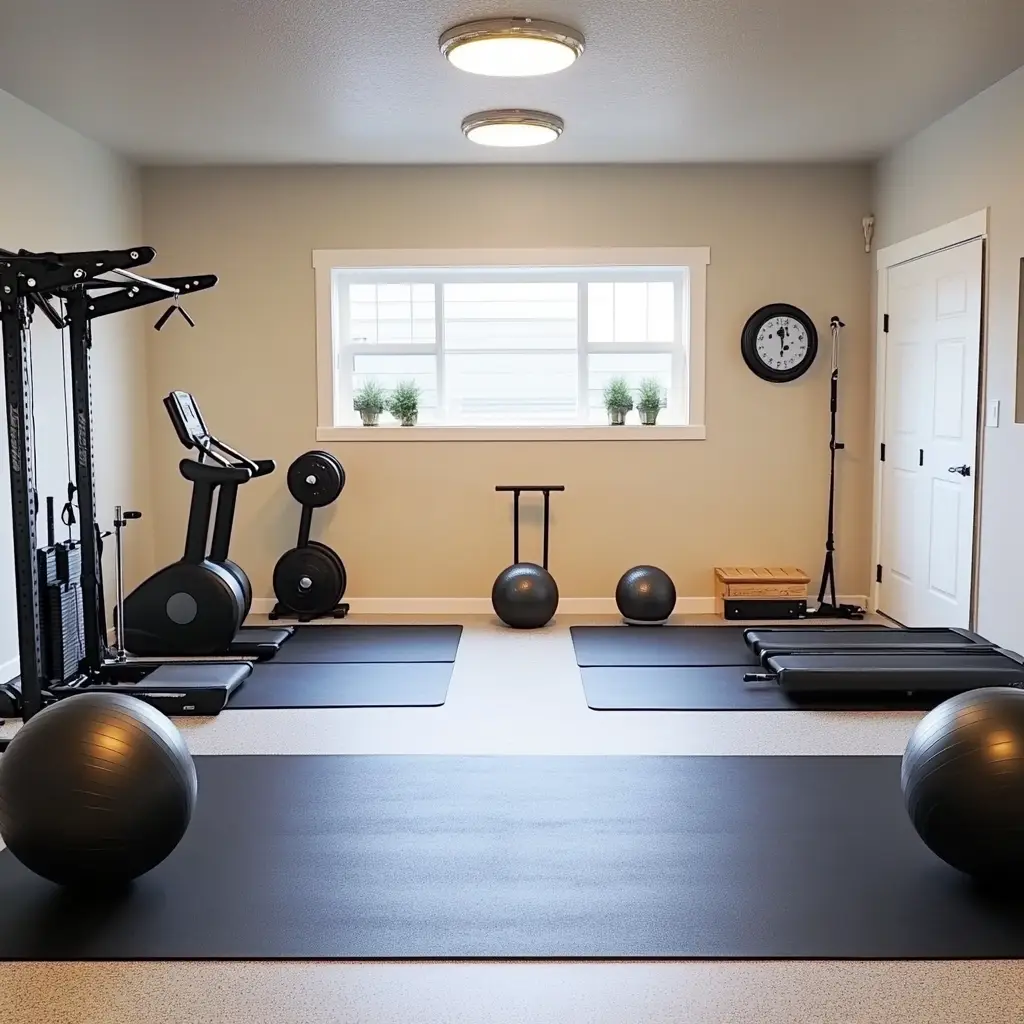
10. Functional Training Layout
Functional training uses real-world movements, and a functional training zone can fit right into your garage. Include equipment like kettlebells, medicine balls, battle ropes, and resistance bands. These tools allow for full-body exercises that improve mobility and strength.
11. Large-Scale Open Gym
If you have the space, consider an open gym layout with a spacious area for bodyweight exercises, floor work, and stretching. You can use storage units along the walls for your dumbbells, kettlebells, and medicine balls, while keeping the middle of the space clear for movement.
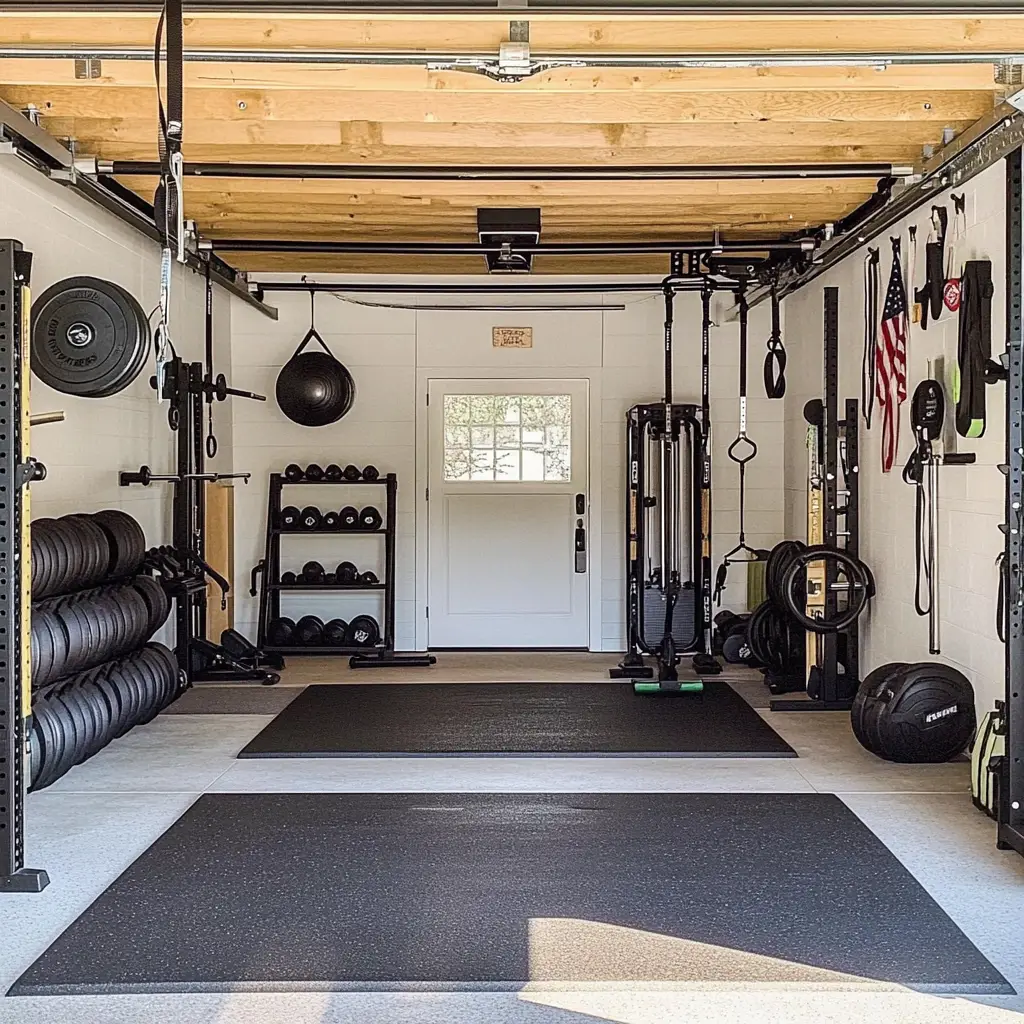
12. Mixed-Use Garage Gym
A mixed-use layout combines several fitness areas in one. Create a cardio zone, strength training area, and stretching section within the same space. Consider using modular storage and movable equipment to keep the area flexible and adaptable.
13. Vertical Storage Layout
To keep your garage gym organized and free from clutter, use vertical storage solutions. Wall-mounted racks for dumbbells, kettlebells, and resistance bands can save valuable floor space while keeping everything easily accessible.
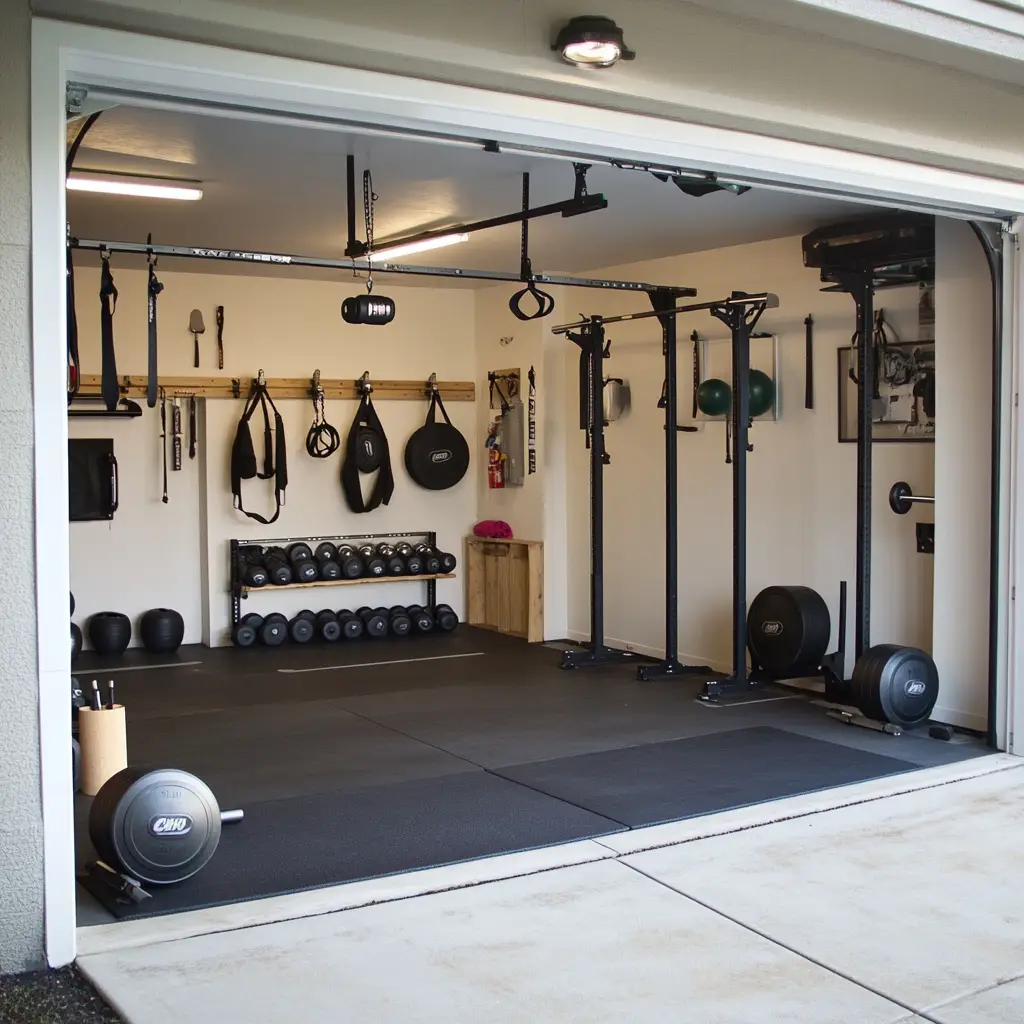
14. Garage Gym with Rubber Flooring
Rubber flooring is an essential element for any garage gym. It provides cushioning for your joints, absorbs sound, and protects the floor from heavy equipment. Choose interlocking rubber mats for easy installation and custom sizing.
15. Dedicated Strength Area
If you’re into heavy lifting, dedicate a large portion of your garage to strength equipment like power racks, benches, and heavy-duty dumbbells. Keep your space open so you can move freely between exercises.
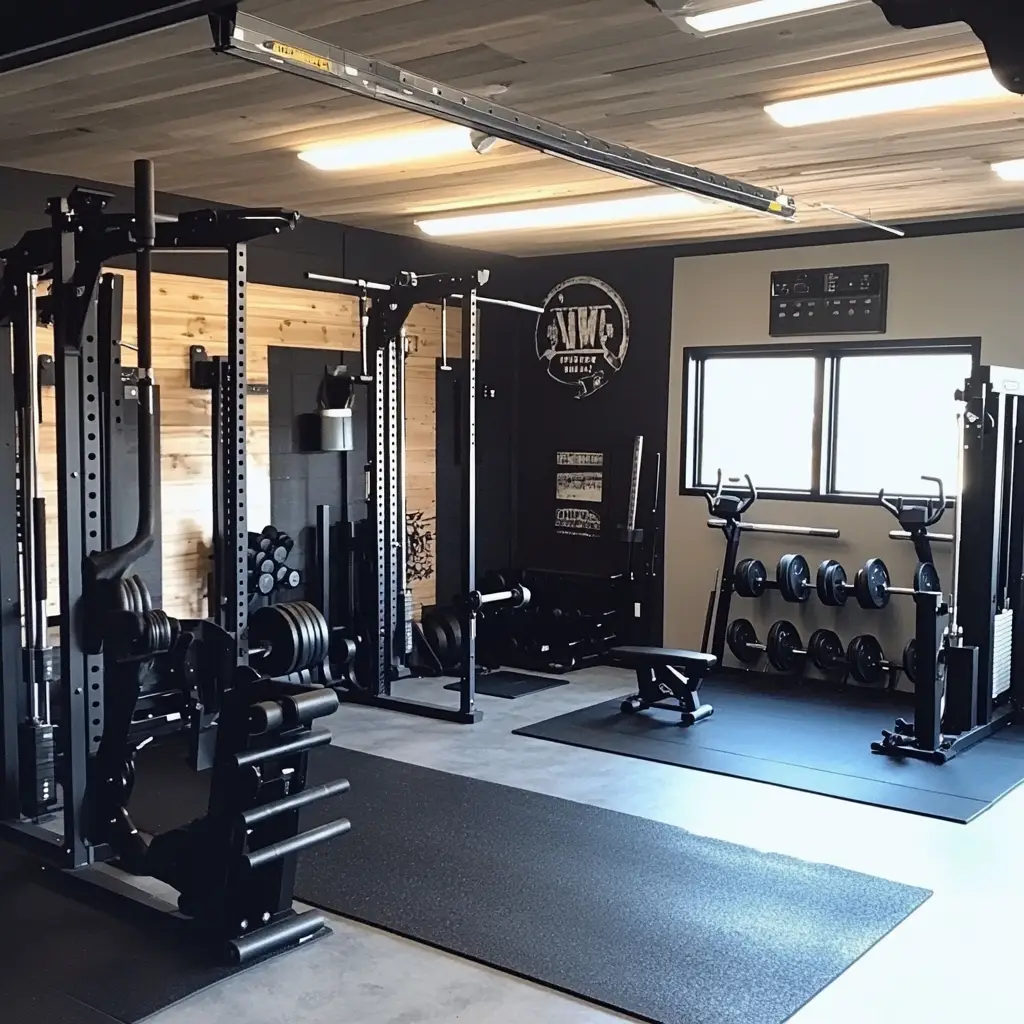
16. Rowing and Cardio Row
If rowing is a key part of your cardio routine, create a dedicated rowing corner with one or more rowing machines. This layout is great for intense cardio and endurance training.
17. High-Intensity Interval Training (HIIT) Space
HIIT workouts require a mix of equipment and open space for quick transitions between exercises. Set up a HIIT zone with a variety of equipment such as kettlebells, jump ropes, and plyo boxes, while keeping enough room for floor exercises.
18. Recovery Zone
After an intense workout, recovery is key. Dedicate part of your garage gym to recovery tools such as foam rollers, massage balls, and a yoga mat. Adding a comfortable chair or small seating area will give you a spot to rest and recover after intense training.
19. Climbing Wall Setup
For a unique challenge, consider installing a small indoor climbing wall in your garage. This layout requires a bit more space and setup but provides a fun and functional fitness element that helps build strength and endurance.
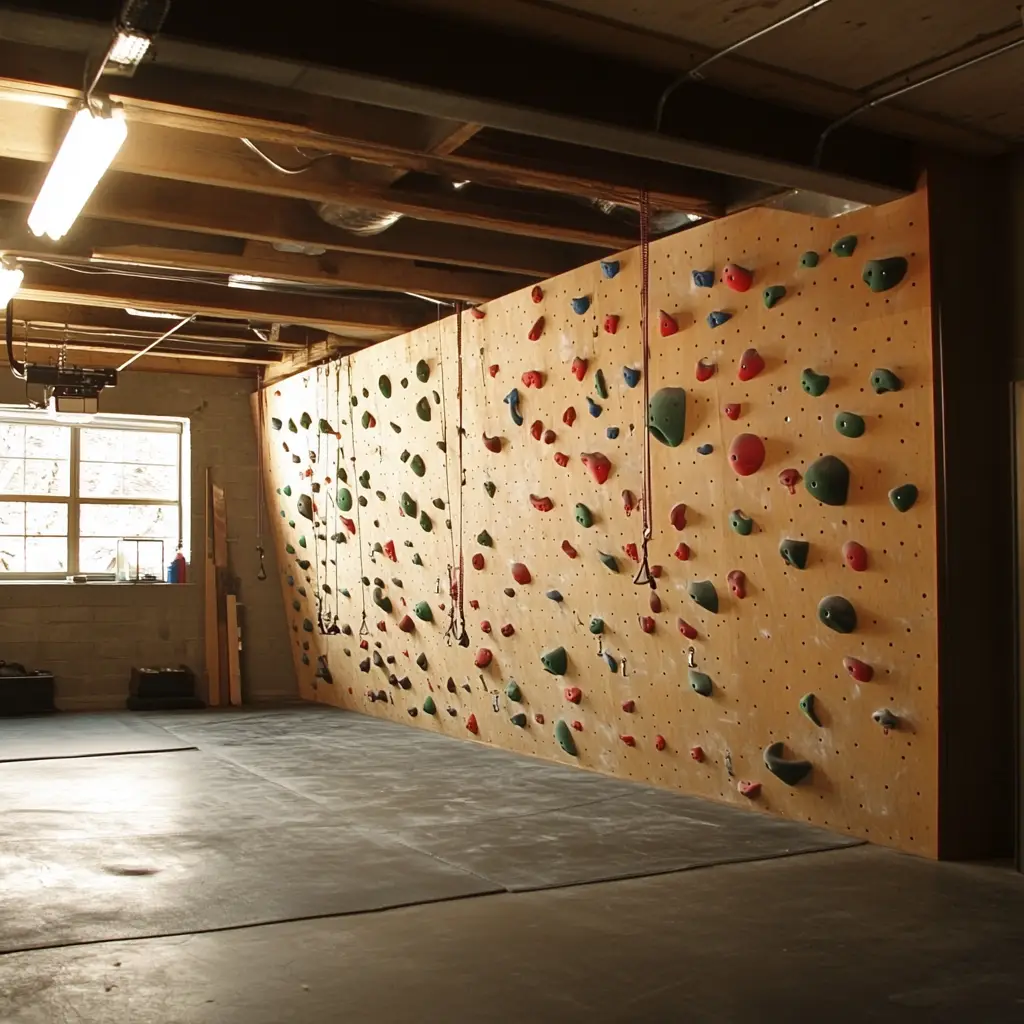
20. Weightlifting and Stretching Area
Create a weightlifting zone with a platform for deadlifts, squat rack, and free weights. Pair it with a designated stretching area using mats and foam rollers. This way, you can work on flexibility and mobility alongside strength training.
21. Garage Gym with Smart Technology
Integrate smart technology into your gym setup. Consider adding a smart TV for workout videos, a Bluetooth speaker for music, or a tablet holder for virtual fitness classes. Smart equipment like a connected rowing machine or treadmill can provide data to track your progress.

FAQs
Q: How can I make my garage gym more comfortable?
A: Consider adding rubber flooring for comfort, insulating the garage to regulate temperature, and installing proper lighting. You can also add a fan or space heater to adjust the climate depending on the season.
Q: What’s the best storage solution for small garage gyms?
A: Use vertical storage such as wall-mounted shelves or pegboards. Compact, stackable bins or baskets also help organize smaller items like resistance bands or dumbbells.
Q: How can I soundproof my garage gym?
A: You can soundproof by adding foam panels to the walls, using rubber flooring, and installing thick curtains or acoustic panels. This will reduce noise from both the equipment and the outside environment.
Q: What kind of equipment should I invest in for a garage gym?
A: Start with the basics: dumbbells, a kettlebell, a resistance band, and a jump rope. As your fitness journey progresses, you can add more specialized equipment like a squat rack, bench, or treadmill.
Conclusion
Transforming your garage into a gym offers the perfect solution for home fitness. From minimalist setups to full-scale, multi-functional layouts, you can design your space to fit your personal workout needs. By planning your garage gym with smart layouts and effective equipment choices, you can create an environment that’s motivating, efficient, and tailored to your goals. With the right combination of organization, equipment, and layout, your garage gym can be the perfect space for achieving your fitness dreams.